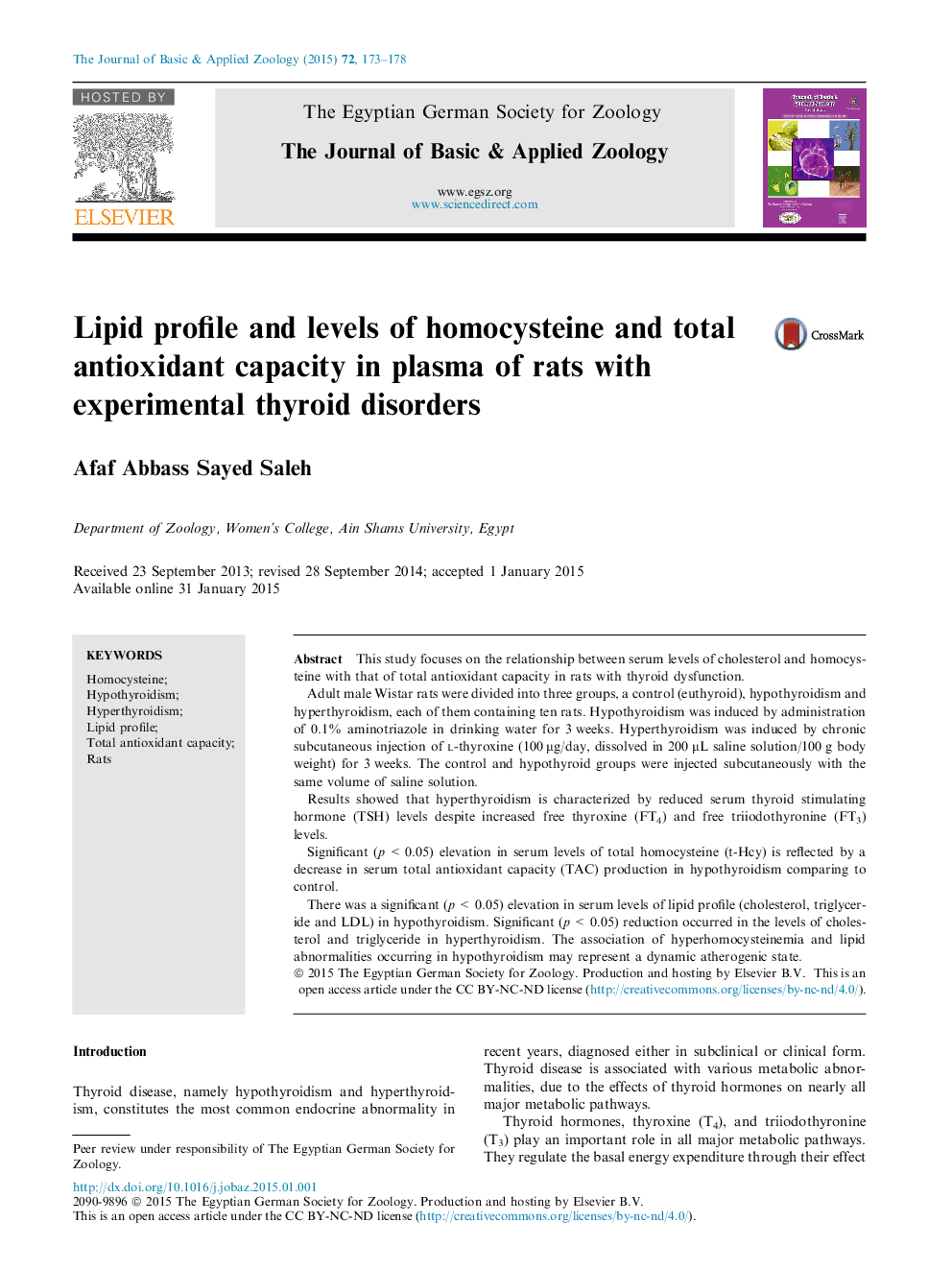| Article ID | Journal | Published Year | Pages | File Type |
|---|---|---|---|---|
| 4493409 | The Journal of Basic & Applied Zoology | 2015 | 6 Pages |
This study focuses on the relationship between serum levels of cholesterol and homocysteine with that of total antioxidant capacity in rats with thyroid dysfunction.Adult male Wistar rats were divided into three groups, a control (euthyroid), hypothyroidism and hyperthyroidism, each of them containing ten rats. Hypothyroidism was induced by administration of 0.1% aminotriazole in drinking water for 3 weeks. Hyperthyroidism was induced by chronic subcutaneous injection of l-thyroxine (100 μg/day, dissolved in 200 μL saline solution/100 g body weight) for 3 weeks. The control and hypothyroid groups were injected subcutaneously with the same volume of saline solution.Results showed that hyperthyroidism is characterized by reduced serum thyroid stimulating hormone (TSH) levels despite increased free thyroxine (FT4) and free triiodothyronine (FT3) levels.Significant (p < 0.05) elevation in serum levels of total homocysteine (t-Hcy) is reflected by a decrease in serum total antioxidant capacity (TAC) production in hypothyroidism comparing to control.There was a significant (p < 0.05) elevation in serum levels of lipid profile (cholesterol, triglyceride and LDL) in hypothyroidism. Significant (p < 0.05) reduction occurred in the levels of cholesterol and triglyceride in hyperthyroidism. The association of hyperhomocysteinemia and lipid abnormalities occurring in hypothyroidism may represent a dynamic atherogenic state.
